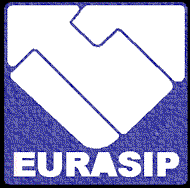| ||||||||||
|
Acivs 2006 Abstracts
Invited papers
Paper 109: Implicit Representations towards Content Extraction and Statistical Interpretation of Medical Images
Registration and segmentation are the two most prominent applications in medical imaging. Traditional techniques aim to recover transformations or segmentation maps that create correspondence between images & delineate structures of interest. Despite enormous progress of these areas, in particular due to domain-knowledge still the number of methods that encode uncertainties of the estimation process are limited. In this talk, we present a rather comprehensive tutorial to image segmentation and object extraction through implicit representations. New techniques aiming to introduce estimations of the uncertainty associated with the obtained solution are presented. Such measures can be used within non-parametric statistical prior shape models to induce constraints in the segmentation process where uncertainties determine the local importance of the model. Therefore we are able to relax constraints in a qualitative fashion according to the nature of the data support while we are able to provide matching measures that account in an implicit fashion for the segmentation errors. Promising results demonstrate the potentials or our method.
Paper 113: Challenges and Opportunities for Processing of Digital Document Images - From File Formats to Device and Content Dependent Visual Representations
Document image processing traditionally targeted the applications printing and natural languange processing, and was mainly text-only oriented and included processing steps such as deskewing, binarization, enhancement, restoration or OCR. These days a document image consists not only of text, but of other visual elements, such as graphics, tables, pictures or logos, that may contain color. In addition, a document's target application may include reading on an electronic display, browsing, or using an image as a query to access a data base. Those applications call for novel processing, e.g. device-dependent handling of image or display-adaptive representation of image information. We will describe the benefits of new file formats and image information representations at a collection of example applications, such as scan-to-email or search and retrieval.
Paper 114: Polyharmonic B-spline Wavelets: From Isotropy to Directionality
Polyharmonic B-splines are excellent basis functions to build multidimensional wavelet bases. These functions are nonseparable, multidimensional generators that are localized versions of radial basis functions. We show that Rabut's elementary polyharmonic B-splines do not converge to a Gaussian as the order parameter increases, as opposed to their separable B-spline counterparts. Therefore, we introduce a more isotropic localization operator that guarantees this convergence, resulting into the isotropic polyharmonic B-splines. Next, we focus on the two-dimensional quincunx subsampling scheme. This configuration is of particular interest for image processing, because it yields a finer scale progression than the standard dyadic approach. However, up until now, the design of appropriate filters for the quincunx scheme has mainly been done using the McClellan transform. In our approach, we start from the scaling functions, which are the polyharmonic B-splines and, as such, explicitly known, and we derive a family of polyharmonic spline wavelets corresponding to different flavors of the semi-orthogonal wavelet transform; e.g., orthonormal, B-spline, and dual. The filters are automatically specified by the scaling relations satisfied by these functions. We prove that the isotropic polyharmonic B-spline wavelet converges to a combination of four Gabor atoms, which are well separated in the frequency domain. We also show that these wavelets are nearly isotropic and that they behave as an iterated Laplacian operator at low frequencies. We describe an efficient fast Fourier transform-based implementation of the discrete wavelet transform based on polyharmonic B-splines. Finally, we propose a new way to build directional wavelets using modified polyharmonic B-splines. This approach benefits from the previous results (construction of the wavelet filters, fast implementation,...) but allows one to recover directional information about the edges from the (complex-valued) wavelet coefficients.





